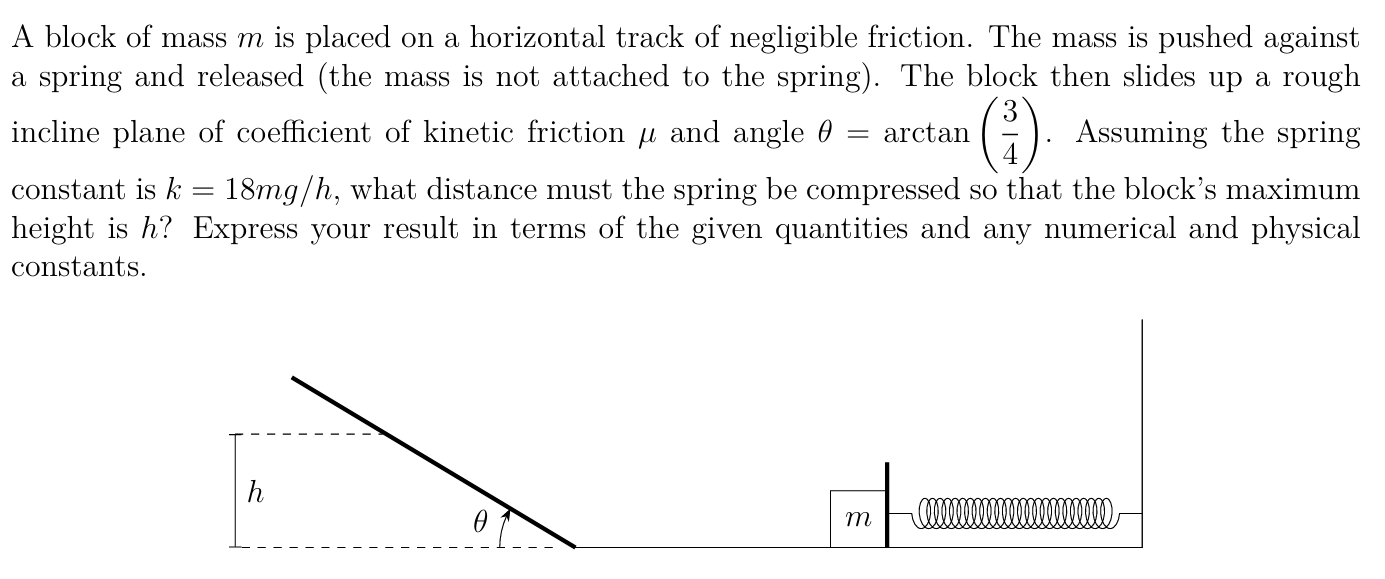A block of mass m is placed on a horizontal track of negligible friction. The mass is pushed against a spring and released (the mass is not attached to the spring). The block then slides up a rough incline plane of coefficient of kinetic friction μ and angle θ = arctan(3/4). Assuming the spring constant is k = 18 mg/h, what distance must the spring be compressed so that the block's maximum height is h? Express your result in terms of the given quantities and any numerical and physical constants.
